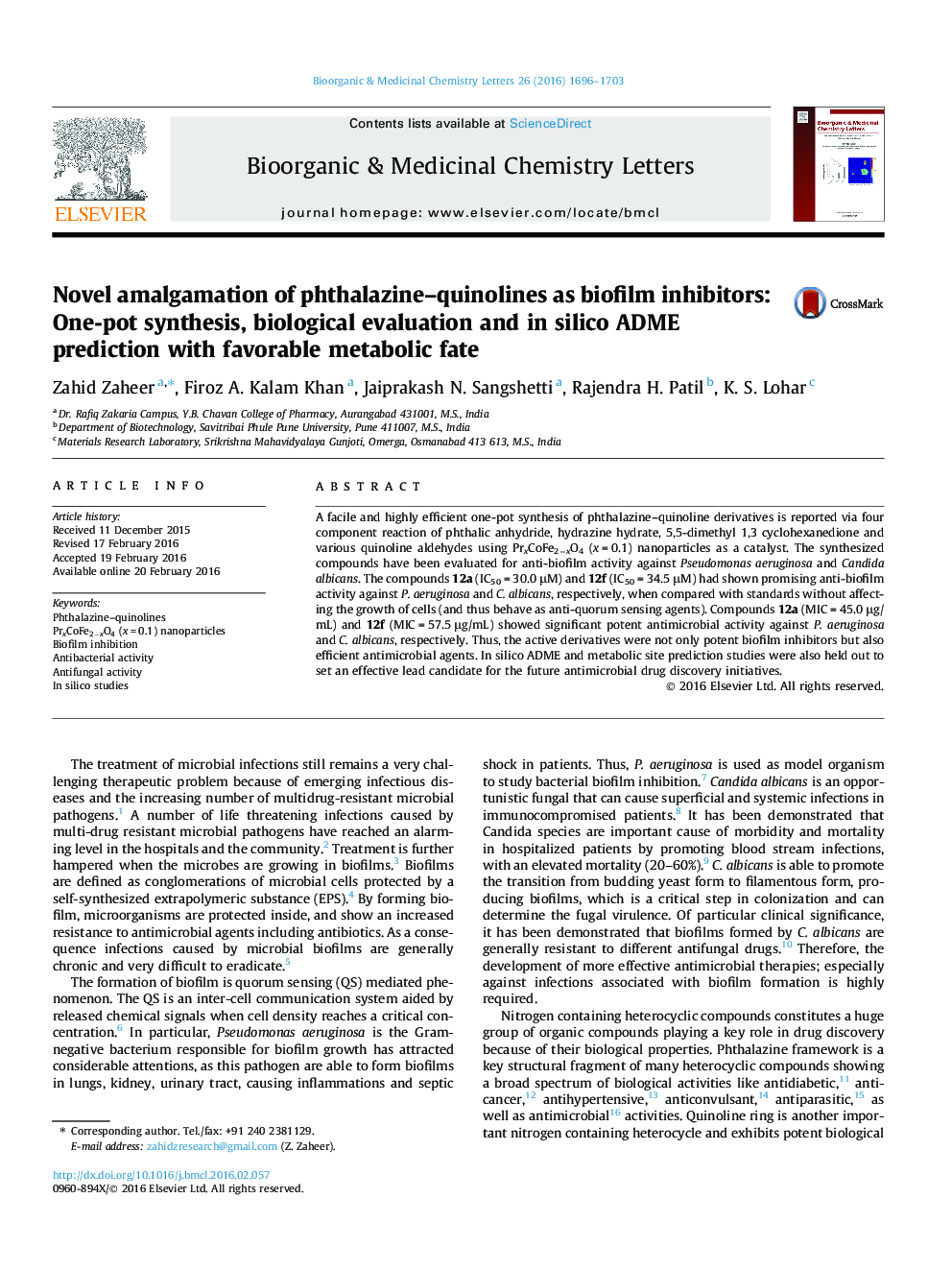| Article ID | Journal | Published Year | Pages | File Type |
|---|---|---|---|---|
| 1370005 | Bioorganic & Medicinal Chemistry Letters | 2016 | 8 Pages |
A facile and highly efficient one-pot synthesis of phthalazine–quinoline derivatives is reported via four component reaction of phthalic anhydride, hydrazine hydrate, 5,5-dimethyl 1,3 cyclohexanedione and various quinoline aldehydes using PrxCoFe2−xO4 (x = 0.1) nanoparticles as a catalyst. The synthesized compounds have been evaluated for anti-biofilm activity against Pseudomonas aeruginosa and Candida albicans. The compounds 12a (IC50 = 30.0 μM) and 12f (IC50 = 34.5 μM) had shown promising anti-biofilm activity against P. aeruginosa and C. albicans, respectively, when compared with standards without affecting the growth of cells (and thus behave as anti-quorum sensing agents). Compounds 12a (MIC = 45.0 μg/mL) and 12f (MIC = 57.5 μg/mL) showed significant potent antimicrobial activity against P. aeruginosa and C. albicans, respectively. Thus, the active derivatives were not only potent biofilm inhibitors but also efficient antimicrobial agents. In silico ADME and metabolic site prediction studies were also held out to set an effective lead candidate for the future antimicrobial drug discovery initiatives.
Graphical abstractFigure optionsDownload full-size imageDownload as PowerPoint slide
